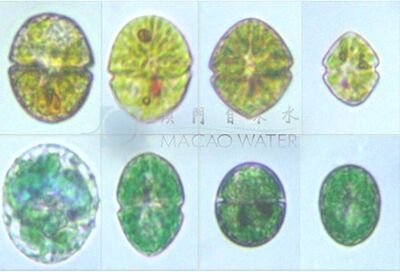Gymnodinium
甲藻門 Dinophyta
雙鞭藻綱 Dinophyceae
裸甲藻目 Gymmodiniales
裸甲藻科 Gymnodiniaceae
裸甲藻屬 Gymnodinium Stein, 1878
描述:Small-to-large (about 5-200 µm) unicellular athecate flagellates of various shapes; globular to spindle-shaped, or dorsiventrally to laterally compressed. Some species form long-chained colonies, others enclosed in temporary hyaline cysts. Amphiesma smooth to rigid, may be striated or punctuated. Cells with well-developed cingulum and sulcus. Cingulum more or less equatorial, or located more anteriorly or more posteriorly, these species not clearly separated from Amphidinium Claparède and Lachmann or Katodinium Fott, respectively. Cingulum circular or slightly displaced, inclusion in Gyrodinium Kofoid and Swezy sometimes arbitrary. Sulcus running from cingulum to the antapex, sometimes notching it but sometimes fading earlier. Sulcus may extend to the epicone and even encircle the apex. Chloroplasts present or absent. Nutrition phototrophic, phagotrophic, or myzocytotic which may result in acquisition of "kleptochloroplasts". Species with endosymbionts or remnants of chrysophycean-like or cryptophycean chloroplasts known. Some species have a stigma, others have trichocysts. Pusules may be very elaborate. Vegetative reproduction by binary fission; sexual reproduction and production of planozygotes with 2 longitudinal and 2 transverse flagella which later may form hypnozygotes acting as resting cysts. Cosmopolitan, freshwater, brackish and marine plankton, and benthos; some species sand-dwelling, others in snow and ice, also endosymbiotic species.
